
The full guide to being a food tourist in 2025 and beyond
Read moreEating your way through new cultures has long been an essential part of any great holiday experience; now, more than ever, passionate travellers are stepping out to discover and savour some of the most delicious dishes from around the planet. For anyone looking for a deeper dive into these experiences, it's time to become a true gourmet globetrotter.
In this guide we'll provide top tips for transforming your travels into mouth-watering journeys that will leave lasting memories on both your taste buds and wanderlust soul. From the best routes to explore to some of the most unsung cultural dishes which everyone needs to sample, we’ll cover it all.

An introduction to food tourism
People travel for all sorts of reasons, food being one of them. But what happens when food becomes your main motivation? You might just be a food tourist.
What does it mean to be a food tourist?
A food tourist, also known as a culinary tourist or a gastronomy tourist, is someone who travels to a destination primarily because of the food and drink that can be found there. But it’s about more than just eating and drinking in another city or country — being a food tourist involves an interest in and appreciation of the history, culture, and environment of the area you visit. It’s a holistic experience.
Food tourists like to learn about the context surrounding the food and drink they consume. Is it part of a tradition or custom? What’s the history? And how is it linked to that society today? You can gain a deeper, more authentic understanding of a place and its people by delving into their culinary cultures.
Activities a food tourist might partake in while travelling are things like:
- Tasting local food and drink
- Eating at a traditional restaurant that serves authentic local dishes
- Eating home-cooked food with local residents
- Going on street food tours with local guides
- Buying produce from local markets
- Attending a food and drink festival
- Taking a cooking class
- Following the travel routes for regional products
- Visiting farms and other local producers, such as vineyards
The rising popularity of food tourism culture
The popularity of food tourism grew in the 2010s, fuelled by a combination of:
- Increasing use of social media channels to document all aspects of life, including travel and food
- A plethora of television shows centred around chefs and restaurants worldwide
- An increase in the number of restaurants (both independent and chains) serving international dishes
Gaining more insight into different cuisines led to renewed curiosity and a desire for cultural experiences. Travel is more accessible than ever and people want more from it, with 53% of people who travel for leisure describing themselves as food tourists.
This is reflected in terms of spending, with the food tourism market estimated to reach $999,033.40 million (approximately £815,825.66 million) by the time 2023 is over.
The impact of food tourism
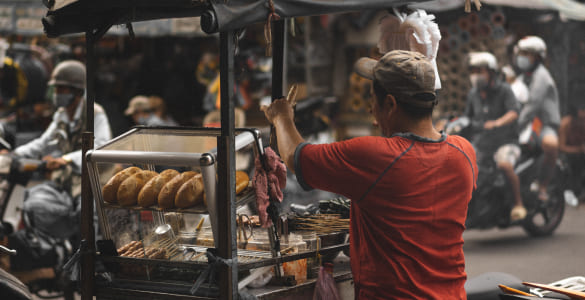
The benefits
Food tourism can lead to a significant increase in profits for local businesses and more employment opportunities for residents, in order to keep up with the demand. It also raises money for the local government, due to the taxes placed on tourist-bought goods.
When visitors’ experiences are documented sensitively on social media, the posts can raise awareness and understanding of a place and its cuisine, encouraging others to visit too. In turn, this user-generated content can be used by food and drink companies, restaurant owners, event organisers, and tourist boards for promotional purposes.
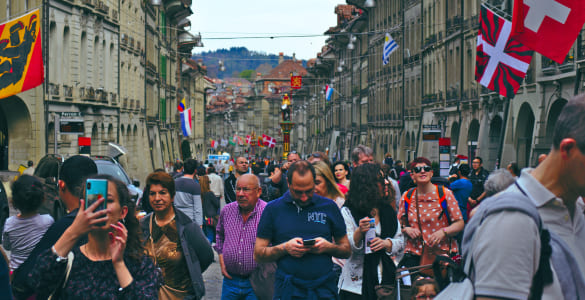
The issues
As with anything, issues have emerged alongside the phenomenon of food tourism. The increased attention on previously unknown destinations can lead to floods of visitors in peak times followed by quieter periods, making it difficult for locals to earn a stable income.
Greater numbers of visitors can also deplete natural resources in areas where these are scarce, raise prices and cause gentrification, prioritising tourist demands and pushing residents out of their homes. This arguably results in the loss of the unique culture that characterised the area to begin with.
There’s also the risk that not all tourists will show care or respect for the people, culture and environment of the area they’re visiting.
Fortunately, you can minimise your impact on your destination by taking care before, during and after your trip.
How to be a sustainable food tourist
Sustainability has never been more important or more widely discussed. The broad definition of sustainability is “the quality of being able to continue over a period of time”, while in an environmental context it’s defined as “the quality of causing little or no damage to the environment and therefore able to continue for a long time”. It’s this second definition that we’ll focus on. Here are some ways you can be a sustainable food tourist.
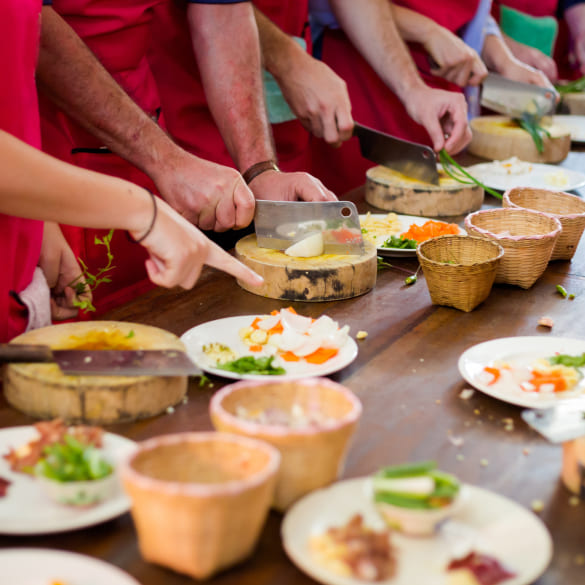
Dine in restaurants where the ingredients are sourced locally wherever possible
The carbon footprint will be much smaller as they won’t have had to travel as far. Plus, you’ll get the freshest taste, so it’s a win for your tastebuds too.
Minimise food waste and don’t over order
While it can be tempting to try as much as you can, food waste generates a greenhouse gas called methane when it’s sent to landfill. Not sure about portion size? Speak to the waitstaff or vendor, who’ll be able to give recommendations.
Take a cooking class
You’ll learn exactly what goes into making the local cuisine, take away tips you can use back home and you get to eat your creations at the end, too.
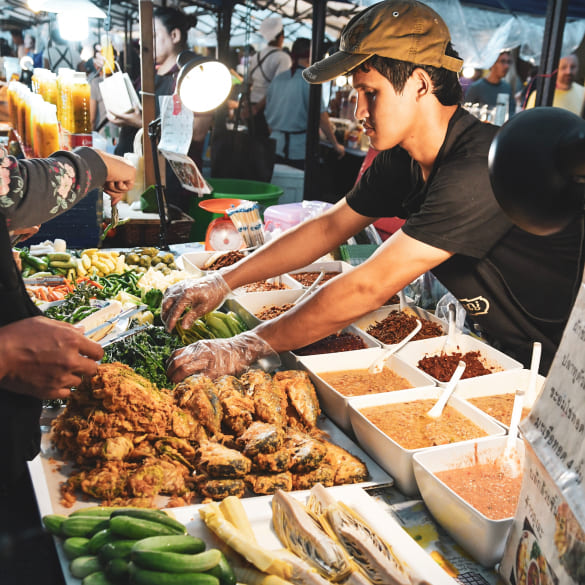
Visit local markets to sample produce and use it to try making a traditional disH
Don’t discount vegetarian or vegan dishes
(This will be easier in some places than others, especially if they have very meat or fish-heavy cuisine.) The rise in plant-based eating has given chefs the chance to be more creative with their recipe creation, plus a recent study has shown that a vegan diet:
- Results in 75% less emissions, water pollution and land use (than diets where over 100g of meat is consumed per day)
- Cuts the destruction of wildlife by 66%
- Cuts water use by 54%

Practical advice for those wanting to explore food tourism
How to plan a culinary-based holiday
It can be time consuming, but careful planning of your holiday can reap the benefits once you arrive. Here’s how to do it once you’ve decided on a destination.

Do your research
It’s easy to get swept away once you arrive and, of course, there’s always room for spontaneity, but a little research goes a long way. Learn about the cuisine of the country you’re travelling to and don’t forget to look into any specialties in the area you’re staying in. Lots of regions have their own interpretations of classic dishes.
Look at reviews and recommendations
Chances are once you’ve begun your research you’ll soon have a list of mouthwatering foods you want to try. This is the time to look up restaurants, markets and street food vendors in your destination so you can decide where you might like to eat — a simple Google search will offer up a plethora of information. You can also read about other diners’ experiences on review sites and social media platforms to help inform your decision. Don’t forget to make reservations at the must-visit restaurants on your list.

Save locations on Google Maps
Found a place you want to visit? Save the location on Google Maps. You can do this on desktop or mobile, though mobile is more convenient when you’re out and about.
To save a location on iOS or Android:
- Open your Google Maps app.
- Check you’re signed into your Google account. (Don’t have one? Follow this guide to create one.)
- Type the location you want to save into the search box.
- You’ll find an information window near the bottom of your screen. In this window you should be able to see a horizontal list of options, such as ‘Directions’, ‘Call’, ‘Directory’ etc. Scroll horizontally until you see ‘Save’, then select it.
- Choose or create the list you want to save the location to. For example, you might create a list called ‘Restaurants to visit in Naples’. Once you’ve chosen a list, select ‘Done’ in the top right-hand corner.
- You can find your list of saved locations by clicking on the ‘Saved’ icon at the bottom of the map screen.
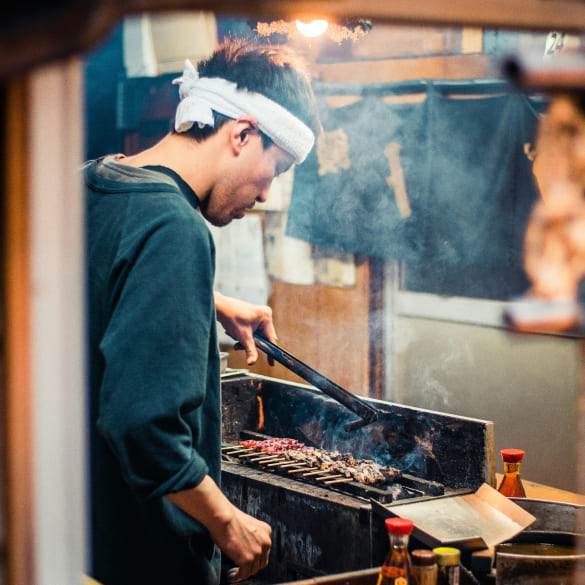
Make sure you know about customs and etiquette
In some places the dining customs will be similar to your own. In others they’ll be completely different and may even contradict each other. For example, in India it’s polite to eat all the food on your plate, while in China it’s polite to leave a little. Either way, knowing local customs means you’ll be able to show respect to other diners while eating and it will also put you at ease, as you’ll know what to do (and what not to do).
And don’t forget to look at timings. The normal time for dinner can vary hugely between countries — anytime from 4pm to 11pm.
Leave space in your itinerary
No matter how carefully you plan, there’ll be some experiences that you just can’t schedule. Leave space for them. Sometimes the best memories are of unexpected joys.
How to be financially responsible on a food tourism holiday
It’s easy to get carried away with spending when you’re on holiday, especially when your focus is food. However, there’s a balance between making the most of your trip and not needing to worry about your bills when you get back home. Here’s how to be financially responsible on a food tourism holiday.

Create a budget and stick to it
Make a list of all your expenses, including the cost of any food experiences you don’t want to miss out on, and give yourself a buffer for unexpected emergency costs. Chances are you won’t need it, but knowing you have it will give you peace of mind.
Know what fees your credit and debit cards might incur
Some banks will charge a fee for transactions you make while abroad, or for withdrawing cash at a foreign ATM. These fees can build up over the course of your trip, adding a significant amount to your spending. Make sure you know what the fees are so you can factor them into your budget or, better still, open a current account which doesn’t charge you and transfer your money for the trip into it. Money Saving Expert has a list of cards they recommend for travel.

Don’t forget travel insurance
While most trips are likely to be trouble free, you never know. Taking out an adequate travel insurance policy will save you from paying hefty medical fees abroad. If you travel frequently, you might consider an annual policy, which could work out as better value for money over time.
Fly economy
Not only does it cost less, but it lowers your carbon footprint considerably. This is because the plane’s emissions split between a greater number of passengers. Studies are inconsistent in the exact difference it can make, but here are some estimates:
- The carbon footprint of a first-class passenger on a long-haul flight is around 5.5 times that of an economy-class passenger
- The footprint of a business-class passenger on a long-haul flight is around 3.5 times that of an economy-class passenger
- Some first-class passengers can have a footprint around 9 times that of an economy-class passenger

Take the train instead
If you’re able to, take a train. They emit significantly less carbon than planes do. For example, a trip from London to Madrid would emit 118kg of carbon dioxide (around 260lbs) if taken via plane, but 43kg (around 95lbs) if taken via train.
Use public transport when you’re there
Obviously this depends on what’s available, but if your destination has a decent public transport system, it’s much cheaper and more environmentally friendly than hiring a car or getting a taxi.
Stay at locally run accommodation
This keeps your money within the local economy, rather than putting it towards a larger chain that may not have the area’s best interests in mind.

Visit a speciality food store
Looking for souvenirs? Avoid the gift shops and seek out a specialty food store instead. You’ll lend your support to producers in the area and be able to take home a taste of your trip.
Avoid chains
You’re probably planning to avoid chains anyway if you’re a food tourist. But, like avoiding chain hotels, seeking out local businesses for your culinary experiences benefits the local economy. And it means you get to try something you wouldn’t get at home.
Bring a refillable water bottle
If the local water is safe to drink then this will save you money on buying bottled water. Many restaurants and cafes will happily fill up your bottle for free if you’ve given them your custom, and lots of cities now have water fountains dotted at convenient intervals.
What does the future of food tourism look like?
There’s no sign of food tourism slowing down. While the pandemic may have led to a slight pause, many people have a renewed sense of adventure and motivation to travel after months spent in one place. And they’re prioritising sustainability and authenticity over generic mass market experiences. 63% of millennials prefer to eat at places that are committed to social responsibility, while 81% of travellers surveyed by the World Food Travel Association said that eating local food allowed them to learn about the local culture.
The food tourism market is expected to reach $4,112,489.40 million by 2033 (around £3,358,320.53 million), a growth rate of 15.2% over a decade.

The 10 best locations for food tourists to explore

1. Barcelona, Spain
Located in the region of Catalonia, Barcelona has a wealth of food and drink to sample, including tapas. The beautiful thing about the tapas that’s become synonymous with Spanish cuisine is that it gives you the chance to try many different dishes in one sitting.
Can’t decide what you want? It doesn’t matter! Although there are some staples, the dishes offered will likely vary from region to region. Here are some Catalonian specialties to look out for on your next tour of Barcelona and Catalonia.
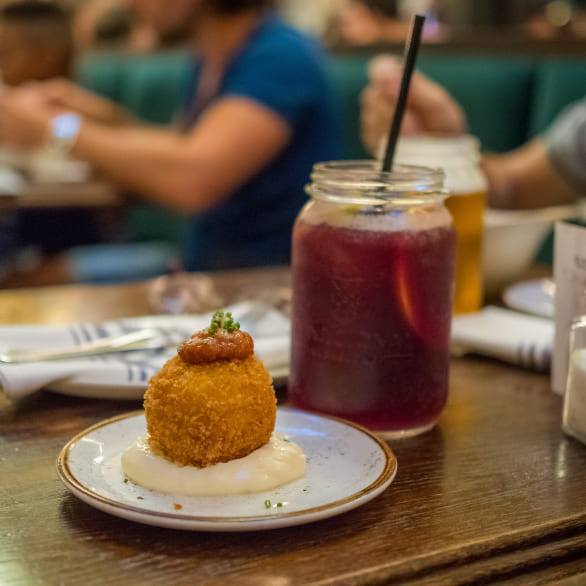
Bombas
The birthplace of these potato treats is disputed (some say Barcelona, others don’t) but the taste certainly isn’t. Mashed potatoes are stuffed with spiced meat or octopus before being coated in breadcrumbs, fried and topped with bravas sauce.
Calçots,
A type of onion that can only be harvested between late autumn and early spring. They’re cooked over open flames so they’re perfectly charred, then served with romesco sauce.
Cua de bou (stewed oxtail)
The oxtail is cooked slowly in a traditional Spanish tomato sauce called sofrito and then served with fresh bread for mopping it up.
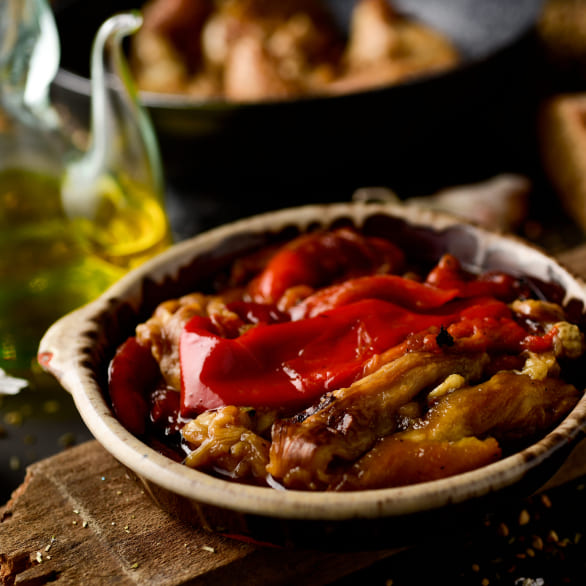
Escalivada
Which consists of roasted peppers, aubergine and onions that have been roasted over hot coals, then served with olive oil and garlic.
Pà amb tomàquet
Toasted bread is taken to the next level by being rubbed with local tomatoes, olive oil and salt. It’s often served as tapas or a side dish in restaurants all over Barcelona.
You’ll have plenty of choice if you’d prefer to eat a single dish instead, from the popular tortilla española, a simple potato omelette, to the classic paella and its pasta-based sibling, fideua.
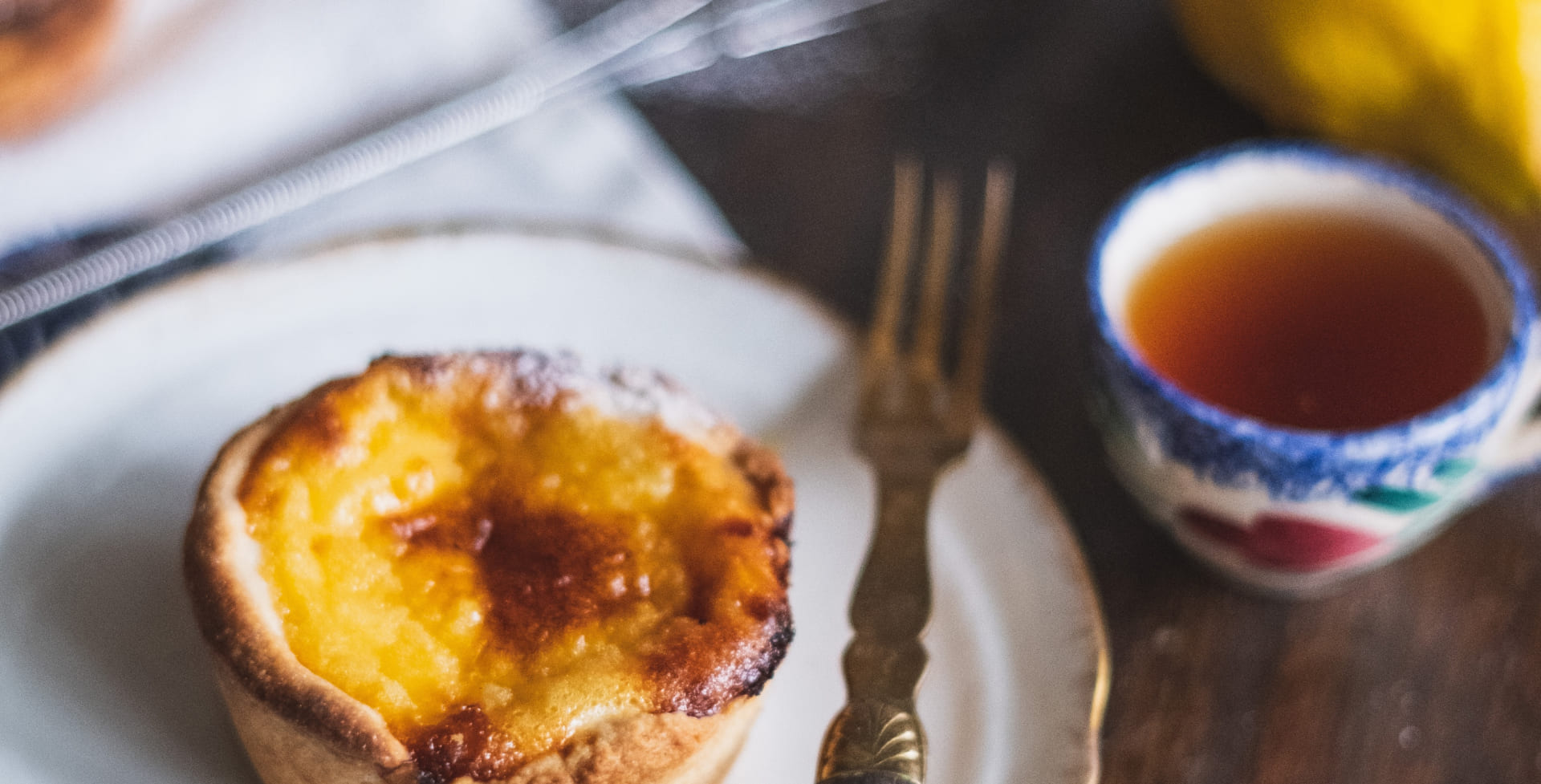
2. Lisbon, Portugal
From sweet pastéis de nata to freshly caught seafood, the Portuguese capital has become as famous for its cuisine as it has for its landmarks and architecture. The city’s location on the mouth of the River Tagus, leading to the Atlantic Ocean, means there’s no shortage of fresh fish and shellfish to be incorporated into recipes. Try a hearty traditional caldeirada (fish and potato stew) or arroz de marisco (seafood rice, often made with prawns, mussels and clams). There’s also Portugal’s national dish: bacalhau (salted cod). Bacalhau can be prepared in many ways, including with fried potatoes and onions, with cream, or in the form of croquettes.
Don’t panic if seafood isn’t your thing — there’s still plenty to try. Meat eaters will enjoy the rich juiciness of leitão (suckling pig seasoned with garlic, bay leaves, salt, pepper and pig fat), while vegetarian and vegan options are becoming more common as the demand grows, often with a focus on locally sourced ingredients.
And anyone with a sweet tooth will love pastéis de nata: delicious egg-custard tarts. They were created by monks in the 1700s as a way to use up leftover egg yolks and have since become a firm favourite.
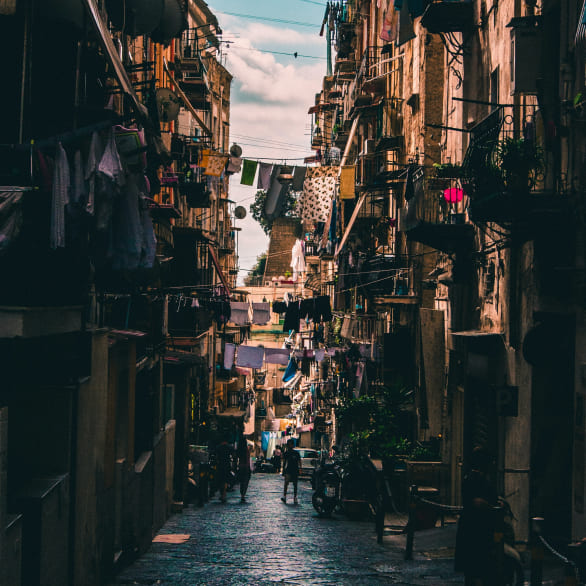
3. Naples, Italy
Italy is well known for its incredible food, so it’s difficult to narrow it down to one city. But there’s just something about Naples. Visit a family-run restaurant and you’ll sample recipes that have been passed down from generation to generation.
The city’s most famous dish is its pizza, set apart by the soft, thin, smoky crust that’s slightly charred from the wood-fired oven, flavourful San Marzano tomatoes and creamy mozzarella cheese. It can be tempting to subsist on pizza for your entire Italian trip, but be sure to try out these Neopolitan specialties too.
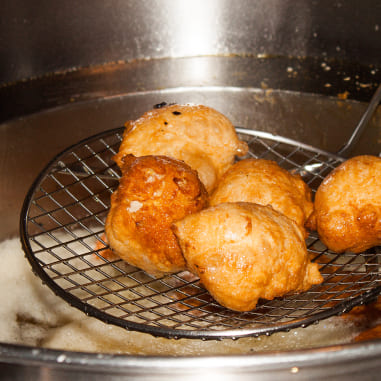
Crocchè
Potato croquettes made from mashed potatoes, eggs, grated Pecorino or Parmesan, nutmeg and parsley, then coated in breadcrumbs and fried. They’re often eaten as a quick snack.
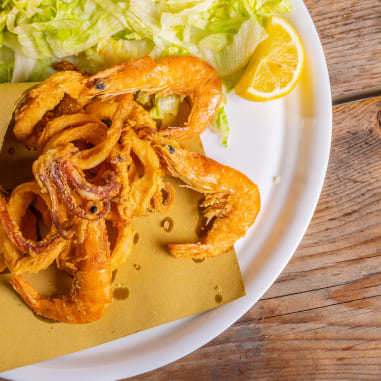
Cuoppo
A street-food snack served in a cone. Seafood (such as shrimp, squid and small fish) and vegetables (such as courgette flowers and aubergine) are cut into bite-size pieces and deep fried, then eaten on the go.
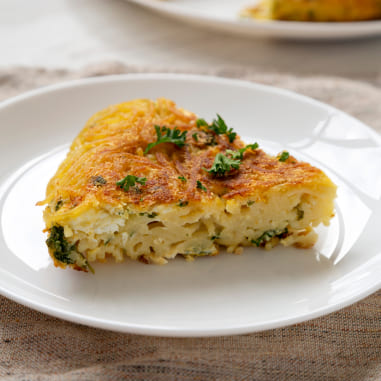
Frittatina di pasta
At its most basic, spaghetti is mixed with bechamel sauce, provolone cheese and peas, then coated with breadcrumbs and fried. Some vendors may add meat, such as ham, salami, or ragù, or use a different pasta shape.
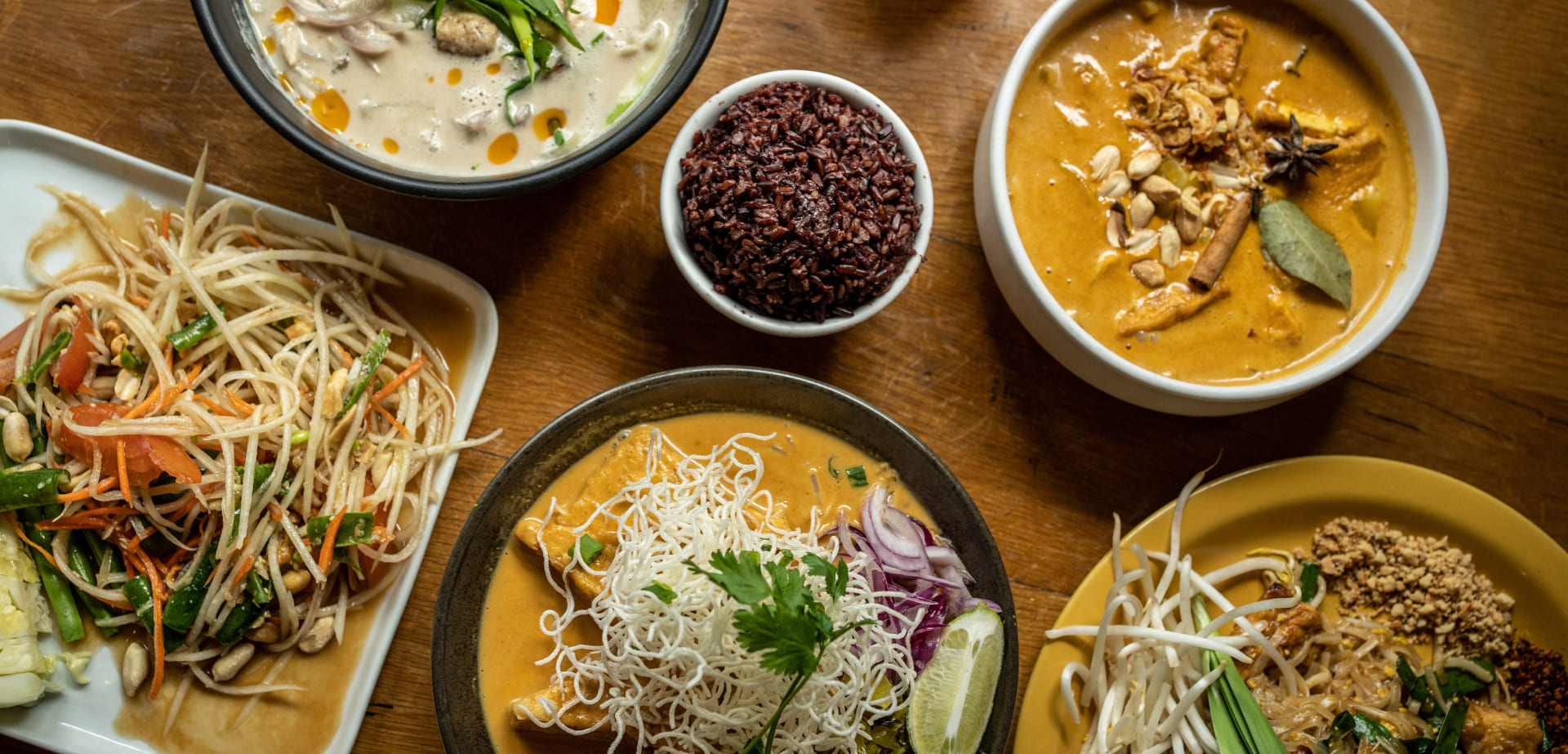
4. Bangkok, Thailand
Thai is one of the most popular cuisines worldwide, with many countries offering their versions of it. But you can’t beat going straight to the source for some authentic food and drink. Street food is a huge part of Thailand’s culture, especially in Bangkok, and it’s an easy way for you to sample the many flavoursome meals available.
Pad Thai is a must-try. This noodle dish is traditionally made with stir-fried rice noodles, eggs, tofu, beansprouts, and meat or shrimp. These ingredients are mixed in a tasty fish sauce and topped with peanuts, vegetables and fresh coriander. Vegetarian versions are made with soy sauce and no meat or shrimp.
Another classic Thai street food dish is boat noodles, so called because they were originally prepared in canoes floating along the canals in central Thailand. In Bangkok, you can still find boat noodle vendors in Victory Monument’s boat noodle alley. The dish consists of noodles, beef, pork, dark soy sauce, pickled bean curd, garlic and radish, topped with pork crackling and basil. It’s served in a beef broth which is sometimes seasoned with cow blood.
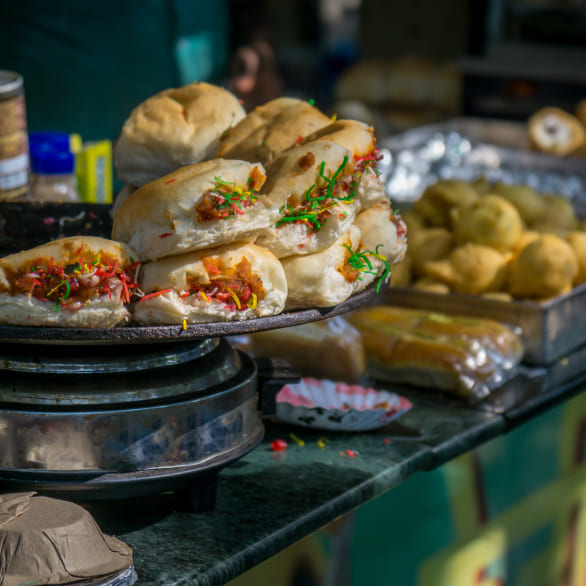
5. Mumbai, India
Mumbai’s cultural diversity is reflected in the sheer volume of different foods available. People from all over the country and beyond, as well as those on trips to India, flock to the city and so it’s natural that this would be reflected in its cuisine.
For a real taste of traditional Mumbai, try vada pav — fluffy buns filled with dumpling fritters and chutneys — or the Bombay (Mumbai) sandwich, which is two slices of white bread filled with potatoes, cucumbers, tomatoes, beetroot, peppers, onions, cheese and chutney. Both are filling snacks to get you through a day of exploring.
If you want to try dishes where the influence comes from further afield, start your morning with akuri on toast, the Parsi take on scrambled eggs on toast that’s popular in Mumbai. The eggs are cooked with onions, tomatoes and chillies, then topped with fresh coriander. Every recipe is slightly different though, with some adding extra flavours like cumin, curry leaves, ginger and garlic.
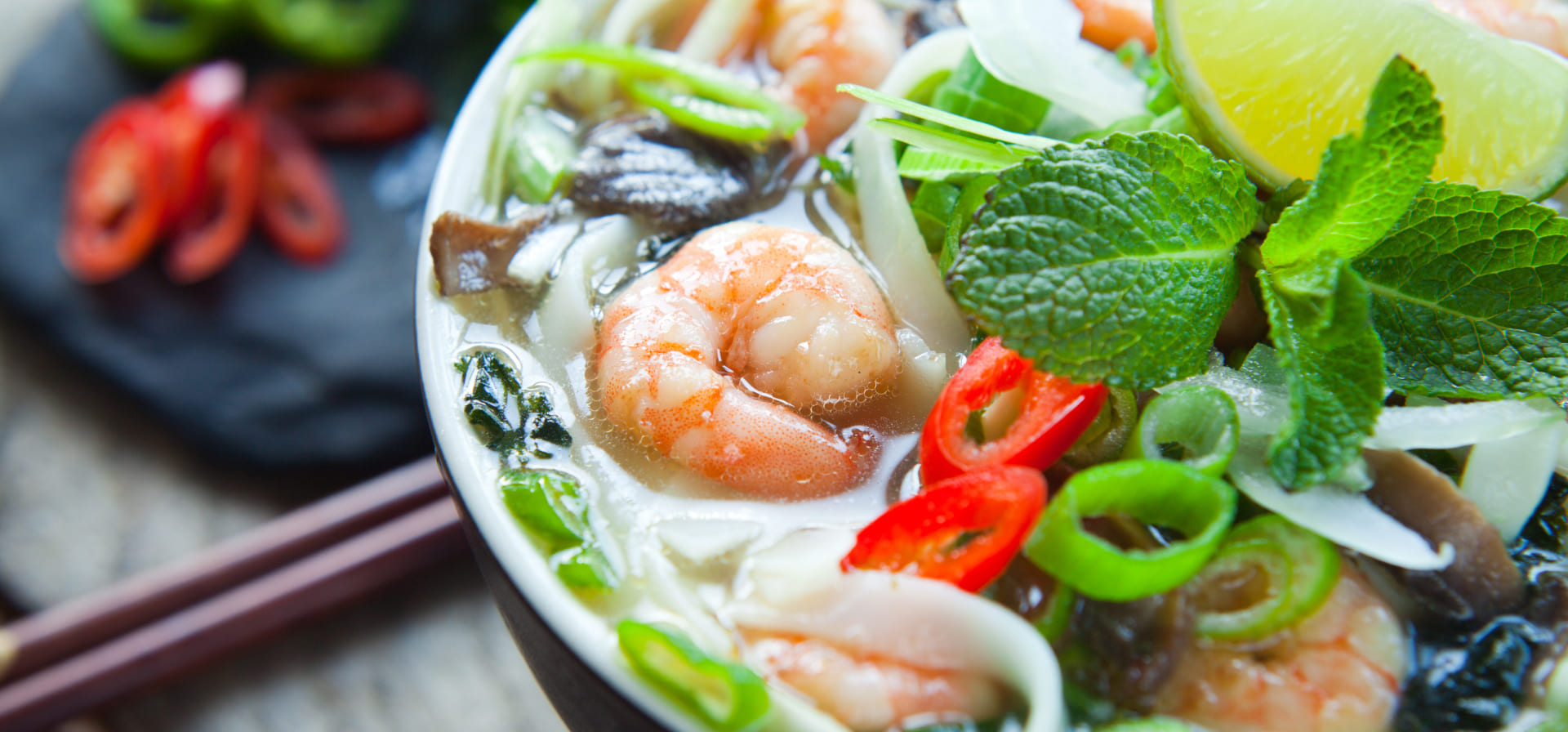
6. Ho Chi Minh City, Vietnam
You’ll never go hungry in Ho Chi Minh City, with stalls and food carts lining the streets at almost every turn. The city is full of residents from all over Vietnam and the cuisine reflects that, with dishes originating from around the country.
Perhaps the most well known Vietnamese dish is pho (pronounced “fuh”), a soup made of bone broth, rice noodles and thinly sliced meat, then garnished with fresh herbs, bean sprouts, chilli and lime. The southern version of pho has a sweeter flavour than the northern version, and there’s great debate over which variety tastes better.
Other must-try dishes include banh mi, a delicious baguette spread with pate and chilli sauce, then topped with meat, pickled vegetables and fresh herbs, and com tam, marinated barbequed pork ribs that’s considered a staple of Ho Chi Minh City dining. Feeling brave? Try snails — they’re cooked and served in spicy sauces. Snails are a social dish, with groups of friends, family and co-workers meeting for a drink and a snack.

7. Tokyo, Japan
It’s not exaggerating to say that Tokyo has everything:
- Traditional, family-run restaurants
- The lively Japanese version of a pub, izakaya
- Yakitori (chicken skewer) joints
- Kaiseki (small plates)
- Sushi restaurants
- Street food vendors
- Markets selling local produce
Establishments tend to specialise in one type of cuisine and do it really, really well, with chefs boasting years of experience. With this in mind, it’s no surprise that bookings are made well in advance, so make reservations ahead of time if you are travelling to Japan, to ensure you don’t miss out.
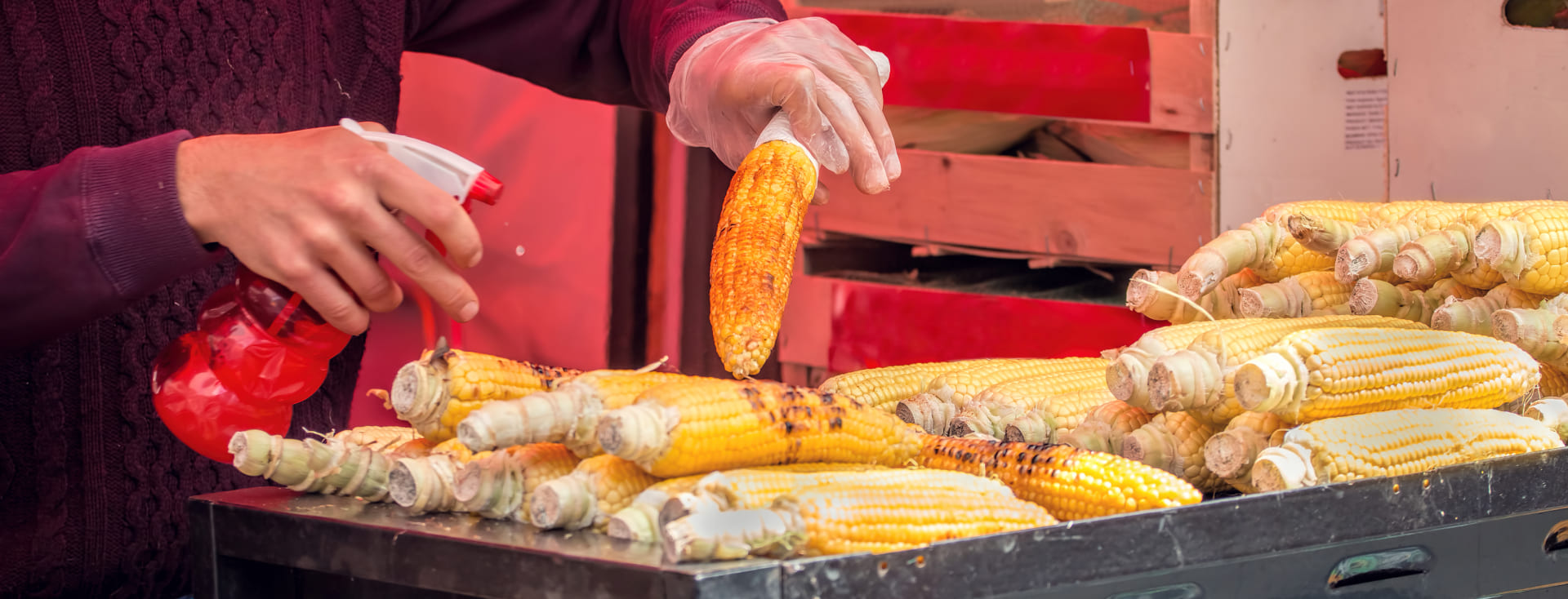
8. Mexico City, Mexico
There’s so much more to Mexican food than fajitas (although, granted, fajitas are still incredibly tasty). And Mexico City is proof of that. The area can trace its cuisine’s origins back to the 14th century, when settlers ate a diet mostly made up of maíz (corn) and frijoles (beans), both of which continue to be staples today.
From well-known classics like tacos al pastor (pork tacos) and enchiladas, to street food snacks like esquites (corn salad in a cup) and tortas (meat, vegetable and cheese sandwiches), to the more unusual dishes like chapulines (toasted grasshopper), there’s something to satiate your hunger.

9. Marrakech, Morocco
It’s no wonder so many people choose Marrakech for their holidays, drawn by its mouth-watering food and warm hospitality. Wander through the medina (the city’s historical centre), shop for spices and other edible goods at a souk, or sit down for a hearty meal at a restaurant.
Morocco’s most well-known dish is tagine, a comforting combination of meat or vegetables, herbs, spices, potatoes and sometimes dates that’s prepared in a clay pot. It’s often served with couscous. There’s plenty more on the menu too, including light bites like zaalouk (spiced tomato and aubergine salad) and sweet treats like chebakia (fried dough covered in syrup) and msemen (flatbread served with butter and jam).

10. Wellington, New Zealand
New Zealand’s capital is a haven for foodies, with an increasing focus on local, seasonal ingredients. The city’s walkability means it’s easy to stumble across somewhere good to eat, especially if you make your way to Cuba Street, which is known for its extensive range of eateries. The types of cuisine offered vary hugely, with chefs taking inspiration from their travels and bringing back new ways to prepare food. Don’t forget to make time to try authentic Māori cuisine, which often features ingredients like kūmara (sweet potato), inanga (whitebait) and freshly baked rewena paraoa (sourdough bread).
Wellington is also known for its coffee and café culture, which is ideal if you need a break between adventures.

The 10 best dishes to try from across the world
It’s almost impossible to narrow it down to 10, but here are the dishes to consider seeking out on your travels.
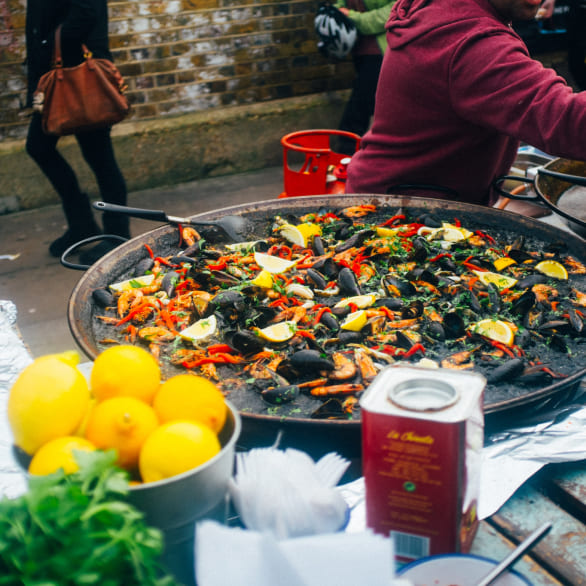
Paella, from Spain
There are many variations of paella, but everyone can agree that the dish was created in Valencia by workers who needed a filling midday meal. Traditional Valencian paella is made of rice, chicken, rabbit, snails, green beans, white beans, tomatoes, onions and saffron. However, you might be more familiar with versions that contain seafood like shrimp, mussels and calamari.
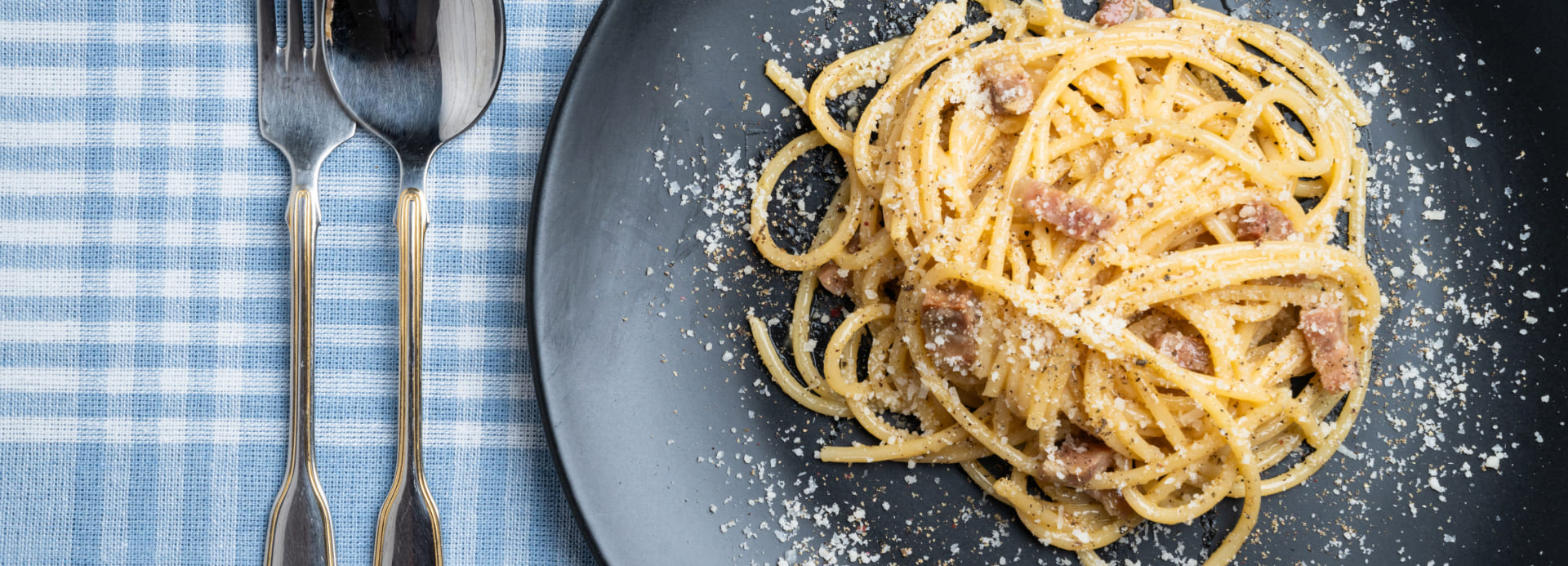
Spaghetti alla carbonara, from Italy
Nothing says comfort food quite like pasta and spaghetti alla carbonara is the perfect way to indulge. Traditionally, carbonara is made with spaghetti, pancetta, egg yolks, Pecorino Romano cheese and black pepper — a simple dish packed with flavour.
Its origins can be traced back to 1943, when the US military brought powdered egg and dehydrated bacon with them and these were mixed with pasta. When the war was over, Italian chefs replaced the powdered egg with fresh ones and the bacon with pancetta, adding cheese and black pepper to boost the taste.
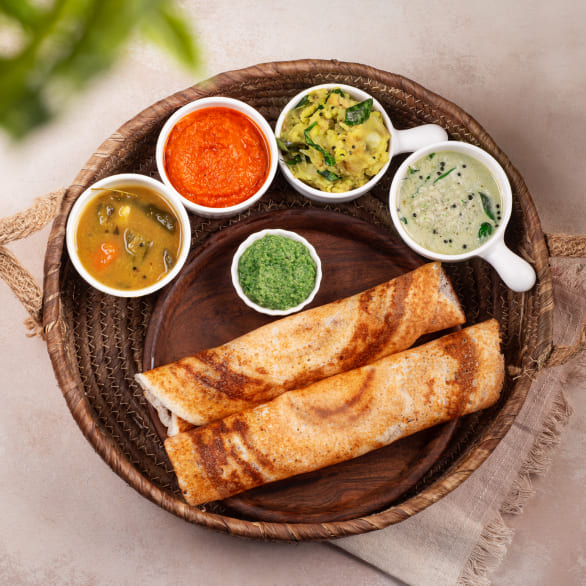
Masala dosa, from India
A little bit like a savoury pancake, masala dosa consists of a thin, soaked rice-and-lentil batter that’s been stuffed with potatoes, onions, fenugreek, curry leaves and mustard seeds, then topped with coconut and coriander and served hot with sambar (dal with vegetables) and chutneys.

Tom yum, from Thailand
Tom yum is a hot and sour soup. There are many variations made throughout Thailand, but common ingredients include lemongrass, kaffir lime leaves, chilli peppers, galangal, fish sauce and lime juice. It can be made with shrimp, squid, chicken or mushrooms, and it makes for an excellent appetiser.
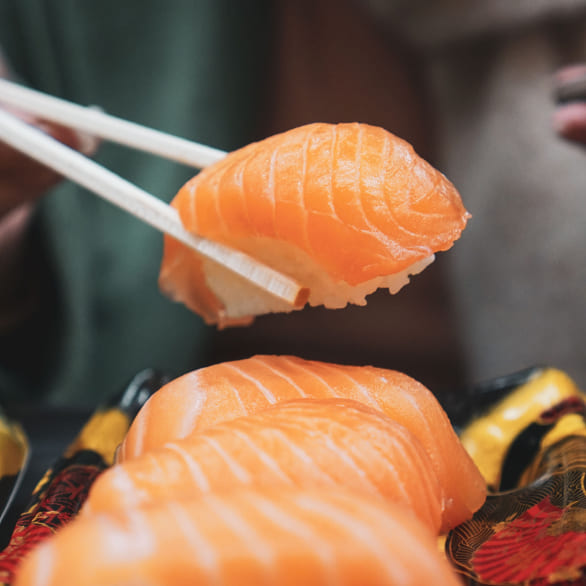
Sushi, from Japan
Sushi chefs in Japan undergo years of training, so where better to try this tasty dish? It’s made from a type of rice called Japonica, which is prepared with vinegar and seasonings, and starchy enough to be moulded and either topped or filled with fish. Sushi topped with fish (often tuna or salmon) is called nigiri, while sushi filled with fish (or other fillings like vegetables) and rolled in nori (seaweed) is called maki.
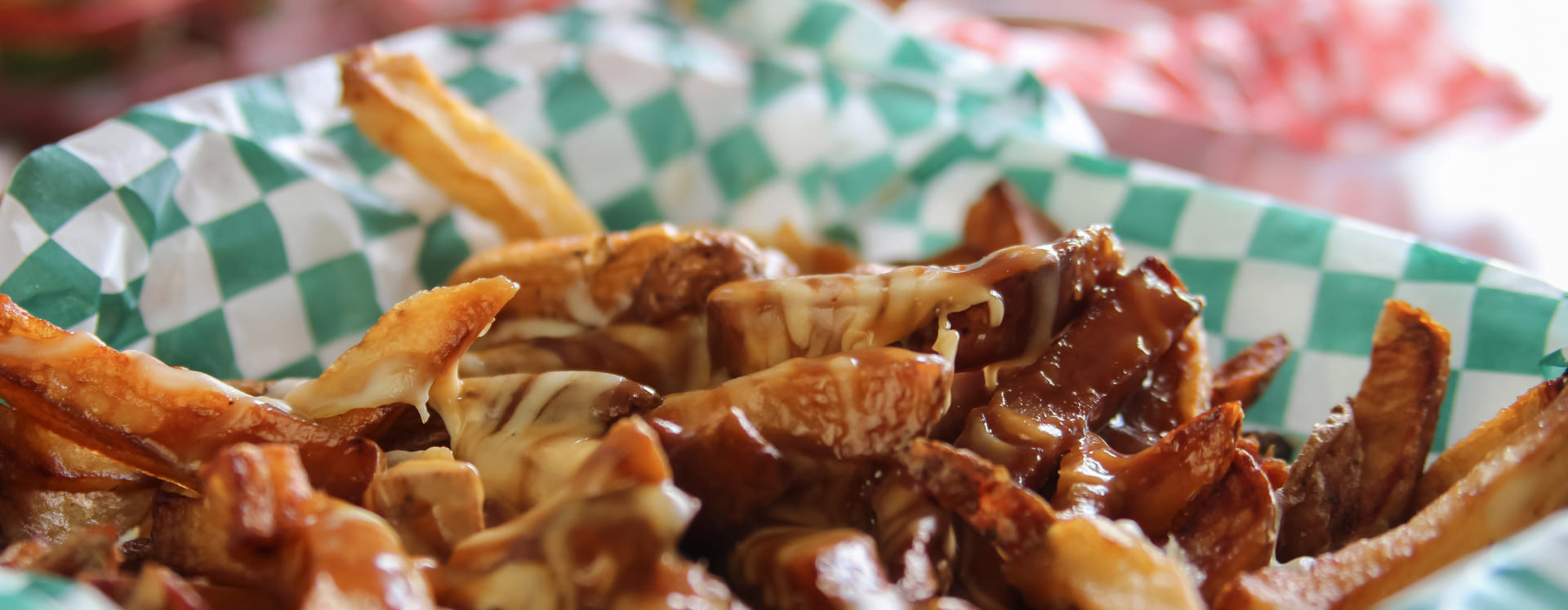
Poutine, from Canada
Traditional poutine consists of only three ingredients — hot French fries, melting cheese curds and gravy — but it certainly isn’t lacking in flavour. It won’t be difficult to find poutine if you visit Canada, but seek out recommendations from locals for the best taste.
Few can agree on where poutine was originally made. The most common story is that in 1957, a customer at a restaurant in Warwick, Québec, asked for their cheese curds and French fries to be packaged in one bag, where they mixed together. In 1964 the owner of Le Roy Jucep restaurant noticed customers ordering cheese curds to add to their French fries and gravy, so he combined the three ingredients, resulting in the poutine we know today.
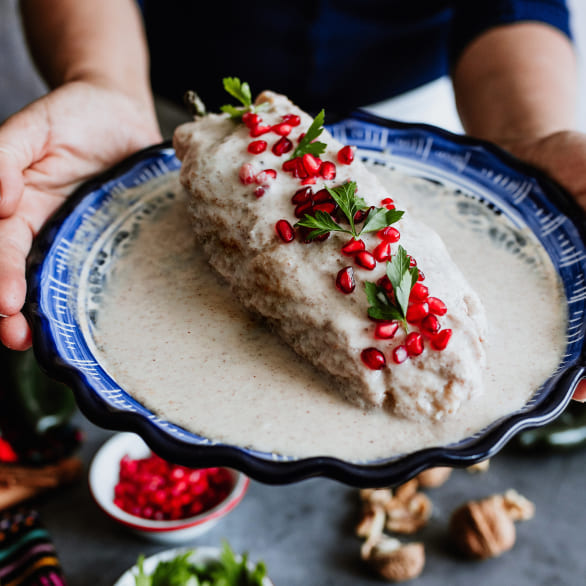
Chiles en nogada, from Mexico
Chiles en nogada is a poblano chile stuffed with a fragrant mixture of meat, spices and dried fruit, then covered with nogada (a creamy walnut sauce) and topped with pomegranate seeds and fresh parsley. The fillings can vary depending on the region, but often include beef or pork (sometimes both). The dish is a curious combination of salty and sweet and is only found between July and September, due to the seasonal ingredients.
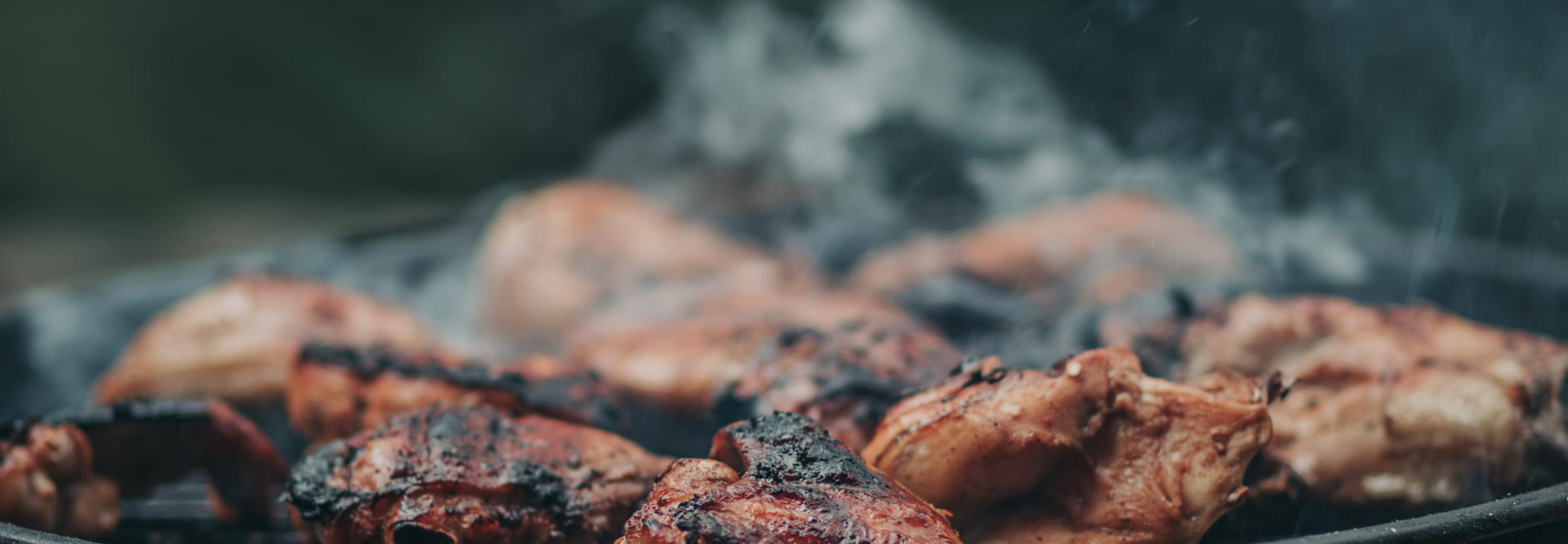
Jerk chicken, from Jamaica
‘Jerk’ refers to the method of cooking which sets this spicy dish apart. The chicken is coated in a spicy marinade, which contains Scotch bonnet peppers and allspice, then cooked over a fire or grilled to add a smoky flavour. It’s often served with an array of delicious sides, including plantain, rice and beans, so you’re guaranteed a filling meal.
The jerk cooking method was created by the Taino (indigenous people of the Caribbean) and taught to African slaves, who used it on chicken.
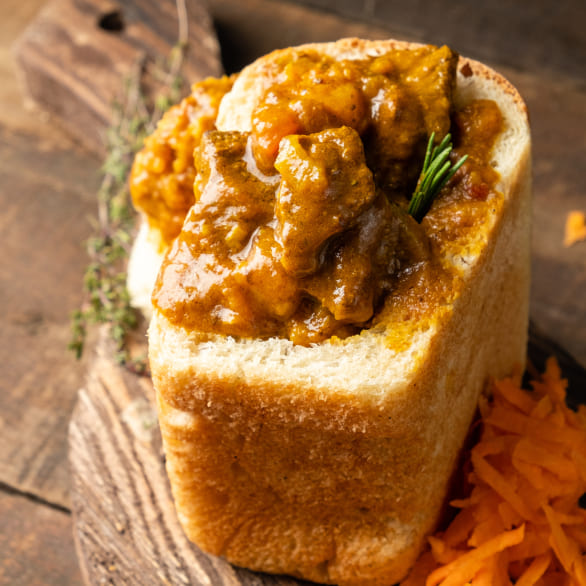
Bunny chow, from South Africa
Bunny chow is a sandwich unlike any other. A quarter loaf of bread is hollowed out, then filled with mutton curry, chicken curry, or a chickpea or bean sauce. Whatever filling you choose, each one is seasoned with spices and served with the bread that was scooped out, for dipping.
There are different stories about why bunny chow was first invented — some say the bread was a means for labourers to transport lunch, particularly for Indians and black South Africans, who were barred from restaurants during the apartheid era. Others say that people belonging to an Indian caste called banias served the dish in restaurants before it gained wider popularity.

Lamingtons, from Australia
Anyone with a sweet tooth will love tucking into a lamington. This Australian cake consists of sponge coated in chocolate and desiccated coconut. Sometimes the sponge has a cream and jam filling. The recipe is said to have been created in Queensland, when Lord Lamington instructed his chef to make sure some sort of snack was on hand for visitors.




